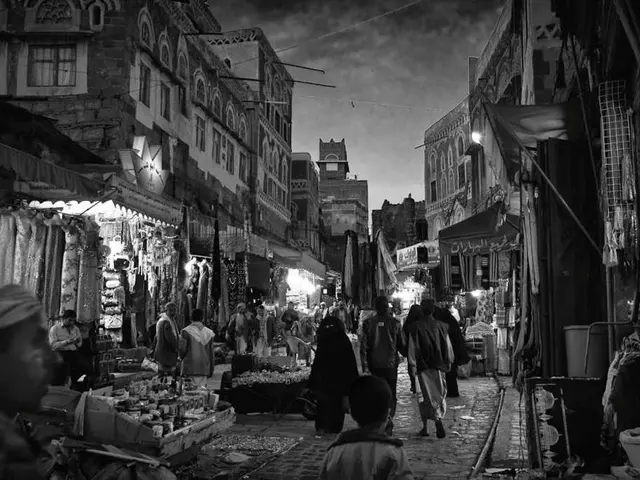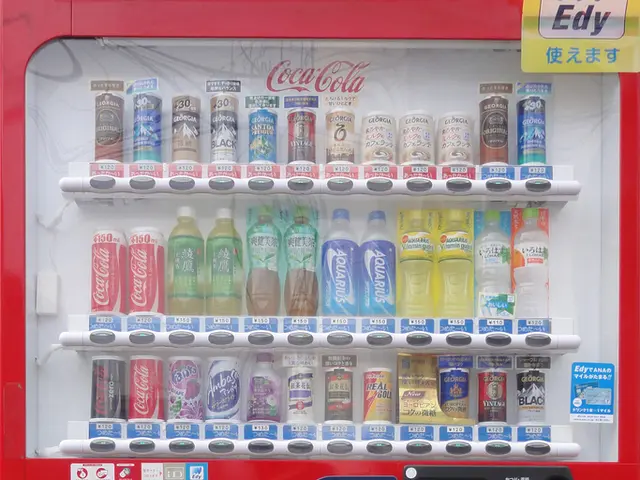Massive Lithium Reserves in Manono, DRC, Draw Attention from China and the United States
Artisanal Mining Boom in the Kitololo Quarry
In the heart of the Sahel region, the Kitololo quarry near Manono, Democratic Republic of Congo (DRC), has become a focal point for the global digital revolution. The quarry, which is expanding monthly, attracts major world powers, including China and now the United States, due to its lithium deposit and the essential minerals coltan and cassiterite[1].
The artisanal mining of these minerals involves hundreds of local diggers—men, women, and sometimes children—who extract the ores manually using simple tools like shovels and crowbars in hazardous conditions. These diggers, such as 21-year-old Floribert, prefer mining to farming due to immediate payment upon ore sale[1].
The Kitololo quarry has replaced rice and sweet potato fields, and on good days, a miner can earn roughly €10, a significant income in the area[1]. However, the economic impact of this artisanal mining is not without its challenges. The miners work under precarious conditions with minimal protective gear, and the local infrastructure has severely deteriorated. There is a social dimension, including advocacy by local figures like Father Moïse Kiluba, who emphasizes the tension between dreams of wealth from minerals and the hardships faced by communities[1].
The expanding quarry also signals environmental and social pressures, as farmland is converted to mining pits. The mined minerals, coltan and cassiterite, are critical for manufacturing electronics, especially mobile phones, making the region strategically significant[1].
The involvement of major world powers is increasing, with China and the United States racing to secure the region's lithium deposits, alongside ongoing interest in coltan and cassiterite. This geopolitical competition reflects the global demand for minerals vital to the digital and green technologies sectors. While the DRC remains a critical supplier, the presence of these powers introduces complex political and economic dynamics that influence local mining practices and broader regional stability[1].
| Aspect | Details | |----------------------------|--------------------------------------------------------------------------------------------------------------| | Location | Kitololo quarry near Manono, Southeastern DRC | | Minerals mined | Coltan, Cassiterite, and increasing attention to Lithium | | Artisanal mining features | Manual labor by local diggers, including vulnerable groups, minimal equipment, expanding quarry replacing farmland | | Economic impact | Provides income (~€10/day on good days), vital livelihood amid poverty | | Social/environmental impact| Declining infrastructure, loss of farmland, social challenges, local advocacy | | Global involvement | China and the US competing for lithium and other minerals, reflecting strategic importance in tech supply chains |
This overview highlights the complex interplay of local livelihoods, environmental and social challenges, and the strategic global competition for critical minerals in the Kitololo quarry area of the DRC[1]. The miners, equipped with pickaxes and mining bars, continue their work amidst these challenges, hoping for a better future in the heart of the digital revolution.
- The Kitololo quarry, a critical source of coltan, cassiterite, and increasingly lithium, which are essential for manufacturing electronics, sees artisanal miners, often vulnerable groups, working under precarious conditions to afford a significant income in the region, while facing environmental and social pressures that deteriorate the local infrastructure.
- In the global race to secure the Kitololo quarry's lithium deposits and other critical minerals, major world powers like China and the United States are intensifying their interests, shaping economic and political dynamics, and highlighting the strategic importance of the region in fulfilling digital and green technology sectors' demands for crucial minerals.




